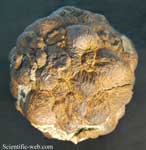| - Art Gallery - |
The mineral marcasite, sometimes called white iron pyrite, is iron sulfide (FeS2). Marcasite is often mistakenly confused with pyrite, but marcasite is lighter and more brittle. Specimens of marcasite often crumble and break up due to the unstable crystal structure, and it is this crystal structure that is the main difference between marcasite and pyrite. Though marcasite has the same chemical formula as pyrite, it crystallizes in a different crystal system, thereby making it a separate mineral. On fresh surfaces it is pale yellow to almost white and has a bright metallic luster. It tarnishes to a yellowish or brownish color and gives a black streak. It is a brittle material that cannot be scratched with a knife. The thin, flat, tabular crystals, when joined in groups, are called "cockscombs." The name was given in 1845 from an Arabic or Moorish name meaning pyrite or similar minerals with a metallic bronze color.[2] In marcasite jewelry, pyrite used as a gem is improperly termed "marcasite". True marcasite is never used as a gem, due to its brittle and chemically unstable structure. Occurrence Marcasite can be formed as both a primary or a secondary mineral. It typically forms under low-temperature highly acidic conditions. It occurs in sedimentary rocks (shales, limestones and low grade coas) as well as in low temperature hydrothermal veins. Commonly associated minerals include pyrite, pyrrhotite, galena, sphalerite, fluorite, dolomite and calcite.[1] As a primary mineral it forms nodules, concretions and crystals in a variety of sedimentary rock, such as at Dover, Kent, England, where it forms as sharp individual crystals and crystal groups, and nodules (similar to those shown here) in chalk. As a secondary mineral it forms by chemical alteration of a primary mineral such as pyrrhotite or chalcopyrite. Alteration Marcasite reacts more readily than pyrite under conditions of high humidity. The product of this disintegration is iron(II) sulfate and sulfuric acid. The hydrous iron sulfate forms a white powder consisting of the mineral melanterite, FeSO4·7H2O.[4] This disintegration of marcasite in mineral collections is known as "pyrite decay". When a specimen goes through pyrite decay, the marcasite reacts with moisture in the air, the sulfur combining with water to produce sulfuric acid that attacks other sulfide minerals and mineral labels. Low humidity (less than 60%) storage conditions prevents or slows the reaction.[5] References 1. ^ a b Handbook of Mineralogy
Retrieved from "http://en.wikipedia.org/" |
|

